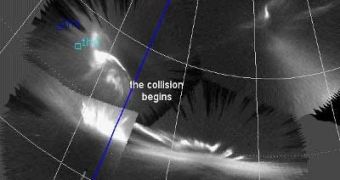The American space agency has revealed the first time-lapse images ever showing a collision between two formations that are generally known as Aurorae Borealis. The light curtains, as they are so often called, collide at far too greater scales to be seen with the unaided human eye, but their interactions were revealed by a network of advanced cameras that NASA installed in the Arctic some time ago. The new images were showcased and explained yesterday (December 17), at the annual meeting of the American Geophysical Union (AGU), Space reports.
For a long time, auroras were known to sometimes form a structure known as a substorm, which is nothing but a massive explosion of light. The phenomenon puzzled astronomers and astrophysicists, as they had a difficult time explaining it, or even proposing possible causes.
In a partnership that was signed between NASA and the Canadian Space Agency (CSA), a network of all-sky imagers was set up near the Arctic. Known as the THEMIS (Time History of Events and Macroscale Interactions during Substorms) mission, this grid is the one that has just revealed the peculiar events.
Experts have known for a while that auroras form when solar winds interact with the upper layers of the Earth's atmosphere. Charged particles from the Sun basically slide alongside our planet's magnetic lines, generating the curtain-like appearance that most auroras have. Scientist Toshi Nishimura, from the University of California in Los Angeles (UCLA) was the first to compile a continent-wide image of the crashing auroras from the THEMIS data, earlier this year.
“Our jaws dropped when we saw the movies for the first time. These outbursts are telling us something very fundamental about the nature of auroras,” UCLA team member Lary Lyons, who is also a space scientist, says. “Our excitement mounted as we became convinced that the collisions were happening over and over,” he adds. In addition to the first movie of these events, countless other observations and photos revealed that the phenomenon was not unique by far, but that it happened very often.

 14 DAY TRIAL //
14 DAY TRIAL //